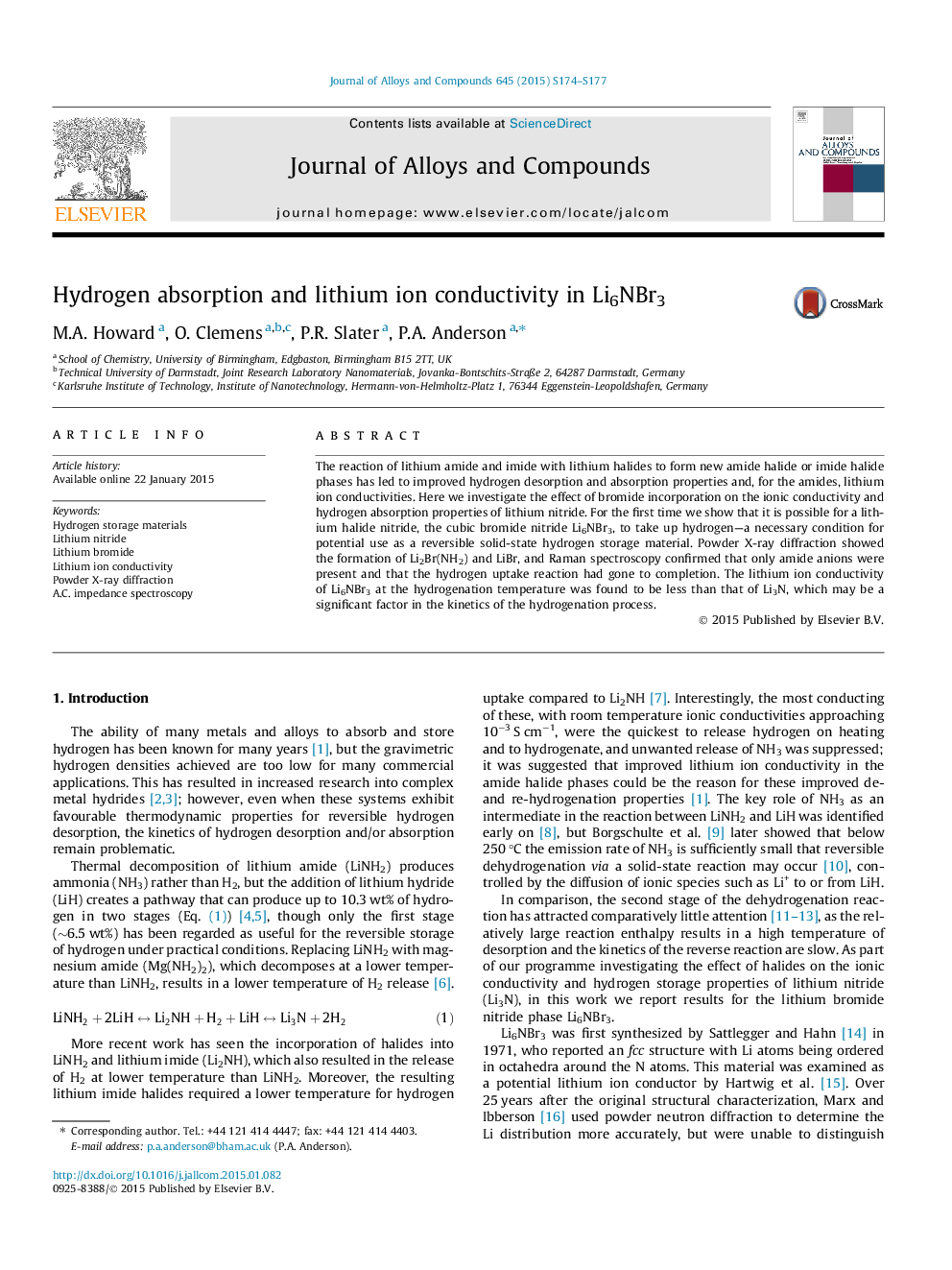| Article ID | Journal | Published Year | Pages | File Type |
|---|---|---|---|---|
| 1608741 | Journal of Alloys and Compounds | 2015 | 4 Pages |
•Li6NBr3 was synthesized via solid state methods and hydrogenation attempted.•Hydrogenation of a lithium nitride halide was demonstrated for the first time.•Powder XRD and Raman spectroscopy showed that hydrogenation had gone to completion.•The ionic conductivities of Li6NBr3 and Li3N were compared through A.C. impedance spectroscopy.•The lower conductivity of Li6NBr3 is consistent with its higher hydrogenation temperature.
The reaction of lithium amide and imide with lithium halides to form new amide halide or imide halide phases has led to improved hydrogen desorption and absorption properties and, for the amides, lithium ion conductivities. Here we investigate the effect of bromide incorporation on the ionic conductivity and hydrogen absorption properties of lithium nitride. For the first time we show that it is possible for a lithium halide nitride, the cubic bromide nitride Li6NBr3, to take up hydrogen—a necessary condition for potential use as a reversible solid-state hydrogen storage material. Powder X-ray diffraction showed the formation of Li2Br(NH2) and LiBr, and Raman spectroscopy confirmed that only amide anions were present and that the hydrogen uptake reaction had gone to completion. The lithium ion conductivity of Li6NBr3 at the hydrogenation temperature was found to be less than that of Li3N, which may be a significant factor in the kinetics of the hydrogenation process.
